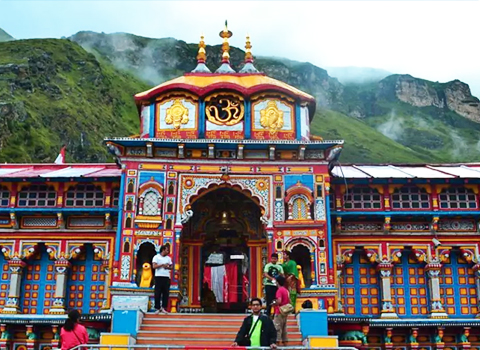
Badrinath Dham
One of Uttarakhand’s four major pilgrimages, or Char Dhams, is the Badrinath Temple, also called the Badrinarayan Temple. It is situated in the town of Badrinath. Yamunotri, Gangotri, Kedarnath, and Badrinath are the four pilgrimage sites that make up the Char Dham. These pilgrimage sites attract a sizable number of visitors annually, making them the most significant centers for religious travel in all of Northern India.
Around 3,100 meters is the elevation at which Badrinath is situated. This holy town is situated in the Garhwal Himalayas, between the Nar and Narayana mountain ranges, on the banks of the Alaknanda river. The philosopher Adi Shankaracharya is credited with founding the temple in the eighth century. The temple is still open, and its presiding deity is Lord Vishnu.
Important details and attributes of Badrinath Temple:
In addition to its religious significance, Badrinath is well known for its breathtaking natural beauty. The Alaknanda River, snow-capped peaks, and lush flora surround the town.
Millions of devotees travel to the Himalayan refuge of Badrinath Temple in search of spiritual comfort and blessings from Lord Vishnu.
- Accessibility: Heavy snowfall and severe weather make it difficult to reach Kedarnath by road throughout the year. Usually, pilgrims take the route until Gaurikund, where they hire horses or palanquins to continue their trek on foot.
- Opening and Closing Dates: As with Kedarnath Temple, pilgrims can only visit Badrinath Temple during a restricted time frame, which is typically from late April or early May until the beginning of November. Because of the high snowfall throughout the winter, it is closed.
- Pilgrimage Route: Usually, pilgrims travel by car to go to Badrinath; Joshimath is the closest large town. Travelers will enjoy breathtaking drives across the Himalayas, taking in little towns and breathtaking scenery.
- Historical Significance: It is thought that the Kedarnath Temple originated during the time of the Mahabharata. In this location, the Pandavas reportedly sought Lord Shiva's blessings following the Kurukshetra War.
- Architecture: The temple's construction is straightforward but distinctive, built with grey stone slabs in the classic Himalayan manner. It is thought to have been constructed in the eighth century by Adi Shankaracharya.
- Destruction and Reconstruction: Natural disasters have struck the temple, most notably the destructive floods in 2013. Even with severe damage, attempts were made to rebuild and bring the temple back to its former splendor.
- Legend: In Hindu mythology, Badrinath is the site where Lord Vishnu is said to have pondered under the Badri tree for countless years. Thus, he is honored in the temple as Badrinath, the Lord of Badri.
